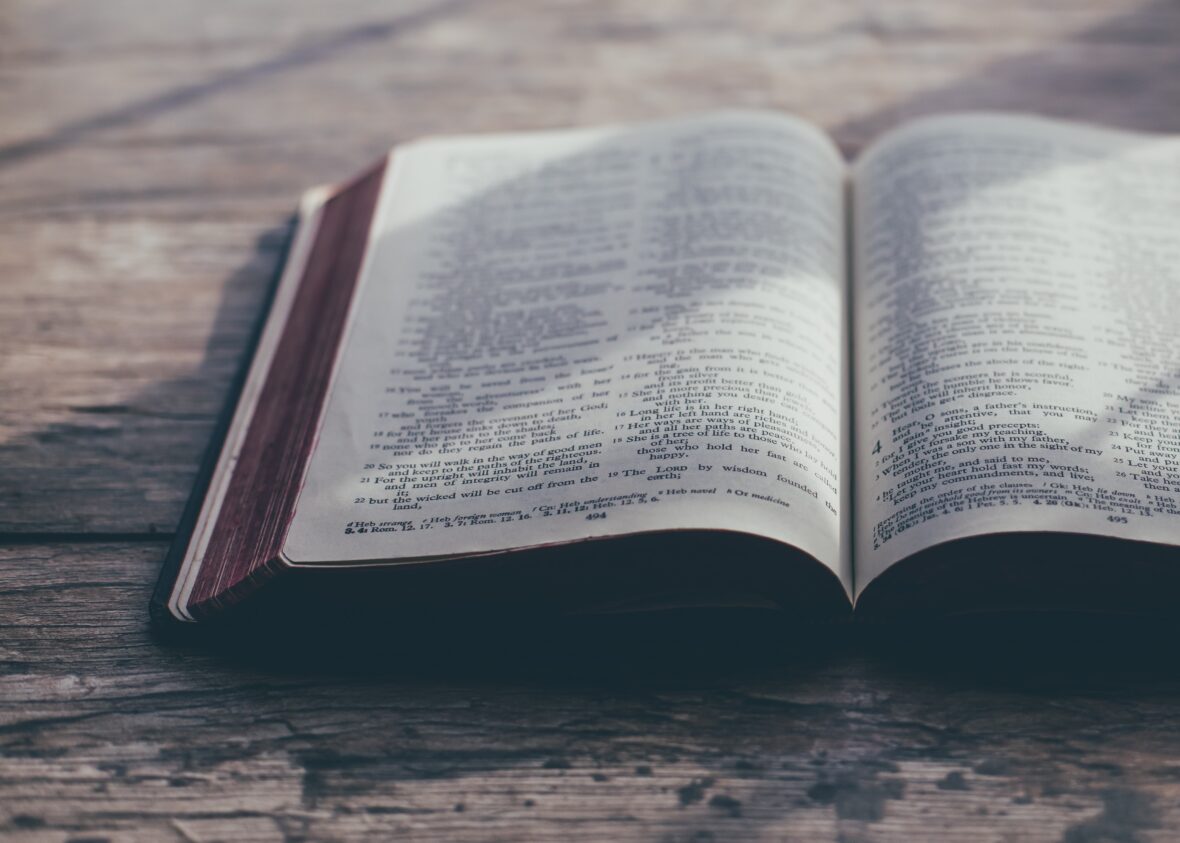Isaiah: The Gospel According to the Prophet
A Sovereign King, A Suffering Servant, A Coming Kingdom
Introduction
Isaiah is the cornerstone of Old Testament prophecy, a towering book of judgment and hope, written to confront a rebellious people with the holiness of God and to comfort a weary remnant with the coming of the Messiah. Spanning from Israel’s darkest sins to the dawn of the new creation, Isaiah declares that Yahweh alone is sovereign over history, nations, redemption, and the destiny of all things.
If Genesis tells us how everything began, Isaiah tells us why everything must be made new. It pierces the human heart with the seriousness of sin and the staggering promise of salvation. Across 66 chapters, Isaiah reveals God’s character more fully than perhaps any other Old Testament book—He is the Holy One of Israel, the Just Judge, the Covenant Redeemer, and the Lord of Armies. This is not just Israel’s story; this is your story. Your world. Your Savior.
1. Title, Author, and Date
Isaiah, whose name means “Yahweh is salvation,” stands as the towering prophet of both judgment and hope. His message spans the collapse of Judah and the cosmic restoration still to come, rooted in the holiness of God and anchored in the promise of a Messianic Redeemer.
- Title: “Isaiah” (Hebrew: Yeshayahu, “Yahweh is salvation”)
- Author: The prophet Isaiah, son of Amoz; affirmed by Jesus (John 12:38–41), Paul (Romans 10:16–20), and Jewish tradition. Strong internal consistency and thematic unity oppose critical claims of multiple authors (Deutero-/Trito-Isaiah).
- Date: c. 739–686 BC; during the reigns of Uzziah, Jotham, Ahaz, and Hezekiah (Isaiah 1:1)
- Setting: Judah, amid Assyrian expansion and moral decline. Prophesies extend from contemporary events to the millennial kingdom and new heavens and earth.
- Role in Redemptive History: A bridge from the Davidic monarchy to the eschatological reign of Messiah. Isaiah reveals the suffering Servant and conquering King, foretelling both Christ’s first and second comings.
Book Stats Sidebar
- Chapters: 66
- Verses: 1,292
- Approx. Word Count: 37,000 (Hebrew); ~25,000 (English)
- Genre: Prophetic poetry, apocalyptic prose, salvation oracles
2. Purpose and Themes
Isaiah’s purpose is to confront sin, comfort the faithful, and call all nations to hope in the Holy One of Israel. It blends courtroom prosecution with royal proclamation and servant poetry.
- Central Purpose: To declare God’s sovereign rule over history, expose Judah’s rebellion, and unveil the Messianic hope for Israel and the nations.
- Major Doctrines:
- Holiness and Sovereignty of God (Isaiah 6)
- Judgment and Remnant Theology
- Messiah as King, Servant, and Conqueror
- Eschatology: Day of the Lord, Kingdom, and Restoration
- Justification by grace through faith (cf. Isaiah 53:11; Romans 5)
- Literary Structure:
- Bifurcated structure: Chapters 1–39 (Judgment) and 40–66 (Comfort)
- Chiasms, parallelism, and poetic oracles
- Embedded servant songs (42:1–9, 49:1–13, 50:4–11, 52:13–53:12)
3. Outline
Isaiah unfolds in two sweeping movements—first warning of imminent judgment, then unveiling comfort and restoration for a repentant remnant under the coming King.
I. Prophecies of Judgment and Warning (Chs. 1–39)
A. Condemnation of Judah’s Rebellion (1–5)
B. Isaiah’s Call and Commission (6)
C. Historical Context: Ahaz and Assyria (7–12)
D. Oracles Against the Nations (13–23)
E. The Lord’s Day of Judgment and Universal Reign (24–27)
F. Woes Against Corruption and False Trust (28–35)
G. Hezekiah’s Faith and Failure (36–39)
II. Prophecies of Comfort and Restoration (Chs. 40–66)
A. The Majesty of God and Fall of Idols (40–48)
B. The Servant of the Lord and Redemption (49–55)
C. Restoration of Zion and Righteous Remnant (56–59)
D. The Glorious Future: Messiah, Kingdom, and New Creation (60–66)
4. Key Themes and Theological Contributions
Isaiah speaks to every epoch of redemptive history—declaring God’s righteous judgment, tender mercy, and sovereign plan from Eden’s ruin to Zion’s glory.
- Creation to New Creation: Isaiah both echoes Genesis and anticipates Revelation—bookending Scripture with Eden lost (Isa 24) and Eden restored (Isa 65–66).
- Typology and Christology:
- Servant Songs prefigure Christ’s humility, obedience, and substitutionary death (esp. 52:13–53:12)
- Branch of Jesse (11:1) and King of Glory (9:6–7) foreshadow both advents
- Covenantal Faithfulness:
- God preserves a remnant (Isa. 10:20–23; Rom. 9:27)
- He will fulfill His promises to Israel (Isa. 14:1–2; Rom. 11:26–27)
- Judgment and Salvation:
- Assyrian and Babylonian invasions as divine discipline
- Ultimate salvation through Messiah and future kingdom
Memory Verse: Isaiah 53:5 (LSB) — “But He was pierced through for our transgressions, He was crushed for our iniquities; the chastening for our peace fell upon Him, and by His wounds we are healed.”
Major Rebellions/Turning Points:
- Judah’s Covenant Rejection (Isaiah 1–5): A reversal of Exodus loyalty; sacrifices without repentance.
- Ahaz’s Alliance with Assyria (Isaiah 7): A refusal to trust God despite offered signs.
- Israel’s National Hardening (Isaiah 6:9–13): God judicially blinds rebellious hearts—until the remnant returns.
5. Christ in Isaiah
Isaiah is the fifth gospel—revealing more about the Messiah than any OT book. Christ appears as the promised King, suffering Servant, Spirit-anointed Redeemer, and eschatological Judge.
- First Coming:
- Born of a virgin (7:14; Matt. 1:23)
- Spirit-empowered (11:1–2; Luke 4:17–21)
- Rejected yet exalted (53:3–12; Acts 8:32–35)
- Second Coming:
- Reigning King (9:6–7; Rev. 19:15–16)
- Avenger of God’s holiness (63:1–6; Rev. 14)
- Restorer of Zion and New Creation (65–66)
- Key Christological Titles:
- Emmanuel (“God with us”) – Isa. 7:14
- Mighty God, Everlasting Father – Isa. 9:6
- The Arm of the Lord – Isa. 53:1
- Servant of the Lord – Isa. 42–53
6. Historical and Literary Notes
Isaiah wrote during geopolitical turmoil—Assyria loomed large, and Judah’s kings wavered in faith. Isaiah’s voice pierced through with poetic fire and prophetic clarity.
- Historical Setting: Assyrian threat (Tiglath-Pileser III to Sennacherib), decline of northern kingdom, instability in Judah
- Genre Elements: High poetic language, visionary imagery, covenant lawsuit format, chiastic parallels
- Key Literary Devices:
- Repetition (“Holy, Holy, Holy” – 6:3)
- Irony (Idols needing to be carried – 46:1–2)
- Enacted Signs (e.g., naked prophecy – 20:1–6)
👤 Key Characters Sidebar:
- Isaiah – Prophet, court advisor, visionary
- Hezekiah – Righteous king whose trust brings deliverance
- Ahaz – Faithless king who refused God’s sign
- The Servant – Composite messianic figure fulfilled in Jesus
- The Remnant – Faithful minority preserved by grace
7. Applications for Today
Isaiah forms spiritual steel in the disciple’s spine. It calls us to holiness, fuels our hope, and forms our worldview in the furnace of prophetic vision.
- Discipleship: Cultivate trust in God’s sovereign plan even in judgment
- Worldview: Understand the holiness of God and the destiny of nations
- Evangelism: Use Isaiah 53 to share the gospel’s substitutionary core
- Ethics and Culture: Stand firm when culture bows to false gods and political alliances over covenant loyalty
- Suffering and Endurance: The Servant’s sorrow gives meaning to our pain and confidence in God’s redemptive purpose
8. Shoe Leather Discipleship Tie-In
This book shows us that…
God is holy, and He will not be mocked—but He is also merciful, and He will not abandon His promises. Isaiah calls us to walk humbly in repentance, courageously in hope, and faithfully in the footsteps of the Servant King. When the world rages and kingdoms rise and fall, Isaiah anchors our hearts in the unshakeable throne of the Holy One of Israel.






